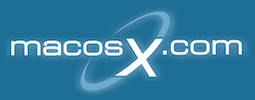Hi all- my 1st post on this forum, & I noticed Liverpool 89 has EXACTLY the same symptoms as my iBook. I've been advised never to use Norton Utilities,again!!! OK I won't but:
My CDRW will not mount or burn but is visible to Disk Utility & the internal HD will not erase/format,partition or mount.
I also noticed the date of this topic was February, & don't know if he fixed it, but he didn't post his Terminal read outs either. It IS scary to the uninitiated but I went for it...
<Last login: Tue May 31 08:32:16 on ttyp1
Welcome to Darwin!
[technopagan-ibook:~] stevebemand% sudo pdisk
Password:
Top level command (? for help): L
pdisk: can't open file '/dev/rdisk0' (Input/output error)
/dev/rdisk1 map block size=512
#: type name length base ( size )
1: Apple_partition_map Apple 63 @ 1
2: Apple_Driver43*Macintosh 56 @ 64
3: Apple_Driver43*Macintosh 56 @ 120
4: Apple_Driver_ATA*Macintosh 56 @ 176
5: Apple_Driver_ATA*Macintosh 56 @ 232
6: Apple_FWDriver Macintosh 512 @ 288
7: Apple_Driver_IOKit Macintosh 512 @ 800
8: Apple_Patches Patch Partition 512 @ 1312
9: Apple_HFS Infamous 12683848 @ 1824 ( 6.0G)
10: Apple_Free 0+@ 12685672
Device block size=512, Number of Blocks=12685680
DeviceType=0x0, DeviceId=0x0
Drivers-
1: @ 64 for 23, type=0x1
2: @ 120 for 36, type=0xffff
3: @ 176 for 21, type=0x701
4: @ 232 for 34, type=0xf8ff
pdisk: can't open file '/dev/rdisk2' (No such file or directory)
pdisk: can't open file '/dev/rdisk3' (No such file or directory)
pdisk: can't open file '/dev/rdisk4' (No such file or directory)
pdisk: can't open file '/dev/rdisk5' (No such file or directory)
pdisk: can't open file '/dev/rdisk6' (No such file or directory)
Top level command (? for help): >
If anyone has the time,just to save going over old ground, here's my Apple Discussion
http://discussions.info.apple.com/webx?14@312.Q5pZaE42ZSu.1@.68ae5a12
& here's my MacOSX.com question
http://www.macosx.com/help/qview.php?questionid=2307
One thing I still haven't tried is Hardware Test in target mode, as my mac buddy is away for a few days but at least I'm still up & running with my firewire backup now with no backup (gulp!)
Cheers if any one can help
technopagan

